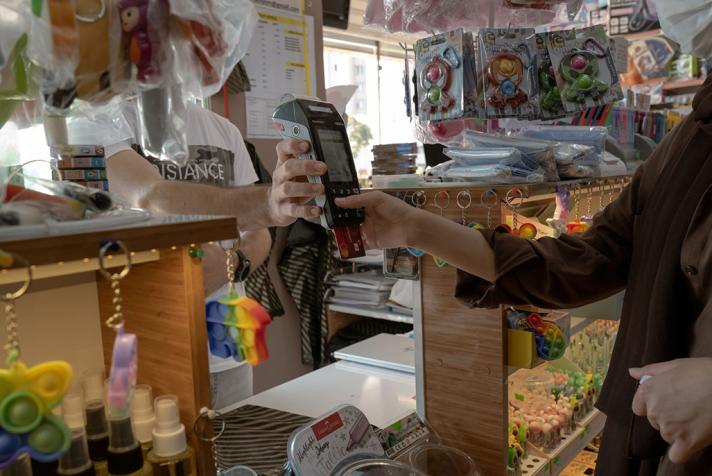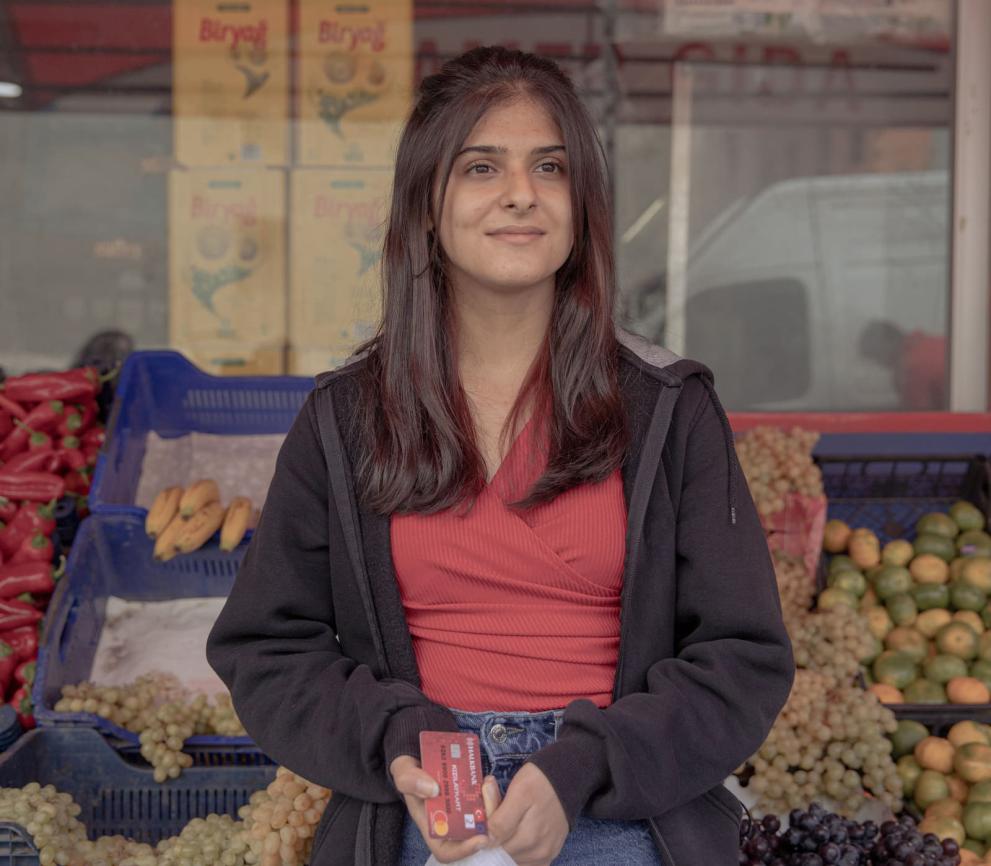What is it?
The cash transfers are assistance in the form of money - either physical currency or e-cash.
In many humanitarian crises, goods are available on the market, but the affected population has lost the means to buy them.
In such cases, cash transfers can be securely provided to those who need it most. The beneficiaries can choose how to use the money, giving them the dignity of choice.
Why is this important?
Evidence shows that cash transfers are often more efficient and effective than other forms of aid.
The cash transfers modality provides affected people with the means and flexibility to decide and prioritise their recovery. In many contexts, cash assistance allows more aid to reach the beneficiaries directly.
It also supports local markets and lays the foundations for communities’ recovery and resilience. Cash transfers are effective in addressing negative coping strategies such as poor diets or debts.

Cash can link with existing social protection systems or build the blocks for future longer-term assistance from the outset.
Given its multi-purpose nature, cash is central to addressing people’s needs in a coordinated and demand-driven way.
Cash preparedness ensures that humanitarian organisations are ready to deliver cash before a shock by having, for example, procedures and agreements in place.
Cash is also a catalyst for innovation. It is strongly associated with other reforms in humanitarian assistance, such as localisation, market-based support and digitalisation.
How are we helping?
Cash transfers is a default modality for EU humanitarian aid. To ensure the most appropriate modality for aid delivery, we conduct a robust analysis on context, market, and the needs of the population.
The use of cash transfers to deliver the EU’s humanitarian assistance has grown in recent years, from 17.4% of the total budget in 2015 and 2016 to 24.6% in 2021 and 2022.
Our commitment to using cash in humanitarian settings is grounded in the policy and operational work of EU humanitarian work. It is also backed up by the political endorsement of Council Conclusions on Common Principles for Multi-Purpose Cash assistance. We are also working to harmonise cash assistance under the Joint Donor Statement on Humanitarian Cash Transfers.

The Commission communication on the EU’s humanitarian action emphasises the links between cash and the secure and efficient use of digital tools. The EU promotes cash operations, which build on technological advances and innovations and use technology to strengthen interoperability and link to longer-term solutions. EU humanitarian aid prefers digital solutions such as electronic cash transfers and digital identities.
Our thematic policy document on cash transfers provides guidance to EU humanitarian partners on using cash transfers. It promotes a coherent system for delivering cash assistance and common approach amongst EU funded humanitarian partners.
Several cross-cutting issues, such as protection, disaster preparedness, greening, and localisation are reflected in the note. The policy document also encourages innovation through digitalisation and interoperability.
The policy is complemented by the large-scale cash guidance note (annex 1), with specific considerations for larger-scale cash programmes above €10 million. The guidance encourages our humanitarian partners to carefully consider and jointly define large scale transfer programmes to avoid fragmentation of their efforts.
Türkiye
Since 2016, the EU’s single largest humanitarian programme in its history, the Emergency Social Safety Net (ESSN), has provided 80 months of uninterrupted cash assistance via EU-funded debit cards to refugees in Türkiye with a budget of more than €2.3 billion.
In July 2023, the EU’s humanitarian aid provided its last cash transfer to more than 1.5 million refugees through the ESSN.
The programme has now been handed over to the EU’s Directorate-General for Neighbourhood and Enlargement Negotiations, in line with the EU humanitarian-development-peace nexus approach. Refugees in Türkiye will continue to receive assistance under the new EU programme Social Safety Net (SSN).

East and South Africa
The EU, together with other donors, funds a programme to provide in-kind food and cash assistance to food insecure populations across Eastern and Southern Africa.
During 2022, we contributed over €33 million for cash transfers.
Ukraine
The EU funds multiple cash assistance programs in Ukraine to support people affected by Russia’s war.
Since the beginning of 2022, we provided €208 million in cash transfers to help with shelter, protection, water and sanitation, livelihoods, education in emergencies, health, and food security.
Partnership with IFRC
In 2022, the EU has started a programmatic partnership with the International Federation of Red Cross and Red Crescent Societies (IFRC), EU National Red Cross Societies, and National Societies in the countries where humanitarian aid is delivered.
This partnership provides an effective and adapted local response to vulnerable communities by providing cash assistance to meet their basic needs and access healthcare.
In addition, it strengthens the unique network of Red Cross and Red Crescent National Societies, which are often the first responders in humanitarian crises.
Last updated: 08/06/2023
Facts & figures
EU humanitarian aid cash transfers in 2021 and 2022:
€1.2 billion
24.6% of the total budget
Top countries in terms of cash transfer value are:
Türkiye, Ukraine, Yemen, Lebanon, Afghanistan
Related information
- Thematic Policy Document No 3 on Cash Transfers, including an Annex 1 on Large-scale Cash Guidance Note (March 2022) FR ES
- Council Conclusions on common principles for humanitarian multi-purpose cash assistance
- 10 common principles for multi-purpose cash-based assistance to respond to humanitarian needs
- Joint Donor Statement on Humanitarian Cash Transfers
- Donor Cash Forum Statement and Guiding Principles on Interoperability of Data Systems in Humanitarian Cash Programming - The CALP Network
- Communication from the Commission to the European Parliament and the Council on the EU's humanitarian action: new challenges, same principles

